This post contains affiliate links. A purchase of any one of these items helps to support this blog and its creative efforts at no cost to you. To read more, please see my disclosure page.
While I'm no gardening expert, I do have some experience with starting flower gardens from scratch – a.k.a. from seeds. This year I’m going bigger than usual, so I thought it might be a good time to share some of what I’ve learned over the years – basic concepts you can apply to starting your own garden, no matter where you live or what types of seeds you’ll be planting.
It doesn’t have to be, nor should it be, a daunting task. It should be fun! So let’s get started so you can get planning!
I thought I'd start off with some pictures of flowers from last summer's garden.
These are a mix of marigolds, cosmos and bachelor buttons.
Gotta love a nice bright sunflower! Mine grew so tall they kept falling over (even though they were in very large clay pots filled and weighted down with heavy dirt). One thing I will warn you about if you grow sunflowers -- when cut and brought indoors they drop pollen all over everything! It's like a dry, yellow powder and it can stain fabric. So beware!
Interestingly enough, when researching this phenomenon, I came across a New York Times article that addresses this very same problem. The answer? Pollen-free sunflowers! Who knew? One company that makes them is Harris Seeds. Maybe I'll try them next summer!
How To Choose Which Flower and/or Vegetable Seed Varieties To Plant
Ideally, you want to choose plant varieties that have been proven to grow
well in your region of the country (more on regions below) and in your
yard/garden space, whatever that may be (sunny, part-shade, all shade,
etc.).
Take note that some flowers are more/less popular with wild animals i.e., deer, so be aware of what local critters might be roaming through your yard in search of food. (Unless you have an enclosed garden that keeps animals out.)
Maybe you're interested in attracting butterflies. There are certain plants, like Cosmos, that are great for attracting butterflies. Other flowers attract hummingbirds, like Black-Eyed Susan. I like to attract both! Figure out what you'd like to attract and do a Google search for suggestions.
If it's fresh cut flowers you'll be wanting, then find out which varieties are most suited to cutting. Many seed packets will say right on it if that particular flower is good for cutting. And some are especially good for drying. I used to love drying roses and then making wreaths and dried floral arrangements with them.
Where To Buy Seeds
Each year I go to Dollar Tree and peruse their flower seed display. (They also sell vegetable seeds.) For the second year in a row I purchased quite a few packets, and they were only 4 for $1.00 – quite a bargain. But be sure to buy early because their seed packets go fast!
You can also buy seeds in local gardening stores, big box home and garden stores, Wal-Mart and even on Amazon. Oh, and then there’s seed catalogs. I’ve never used them, but for some people it’s a yearly ritual – waiting for that seed catalog to arrive so you can pick your seeds and plan out your garden.
Some examples of popular seed catalogs are Park Seed, Burpee Seed Catalog and Annie’s Heirloom Seeds. From what I can tell, if you get on their mailing lists you should receive your catalogs some time in December for the following spring. Catalog mailing dates may vary, so be sure to check with each individual company you’re interested in.
Create A Seed Planting Chart
Once you’ve chosen and purchased all your seeds, it’s time to create a seed planting chart.
Read the backs of all the flower seed packets and start writing down pertinent information for each type of seed such as when to sow, etc. They usually mention a time to sow (plant) within a certain period of time before the risk of last frost in your area. To figure this out go to The Old Farmer's Almanac, put in your zip code, and find out what zone you're in. Zones are determined by first and last frost dates.
Here in northern Illinois we’re in Zone 6a. Our last frost date(s) range is from May 21st to May 31st. Therefore, planting seeds or new seedling outside after May 31st should be safe and free from any chance of frost.
For indoor planting, the dates I chose hinged on what it said on the back of each seed packet. For example, one of the zinnia seed packets said to sew the seeds indoors 3 to 4 weeks before outdoor planting time. Since my last frost date window is May 21st to May 31st, counting backwards 3-4 weeks tells me that I should plant my zinnia seeds indoors around April 23rd (the 4 week mark).
When in doubt, most annual flowers and vegetables should be sown indoors about six weeks before the last frost in your area. So for my area that would be between between April 9th and April 16th.
The best way to keep track of all the different indoor sew dates is to create a seed planting chart.
Sample Seed Planting Chart
It's really up to you what you put on the chart. Here is an excerpt from mine:
1. Plant Name: African Daisy
2. Sew Date: April 3rd
3. # of Packets/Brand: (1) Dollar Tree
4. Sew: Indoors X Outdoors
5. Depth to sew: 1/8"
6. Seed spacing: 10"
7. Plant HEIGHT* 12"
I'll admit I'm not a stickler when it comes to depth and spacing. I usually kind of wing it when it comes to those things. What IS important, though, beside the actual Sew Date, is the plant HEIGHT. This will determine the order of rows in your garden. What do I mean?
Assuming your garden is either a rectangle or a square, you'll be planting your seedlings in rows. If you keep track of the expected plant heights you'll know in what order to plant them -- always from tallest along the back to smallest along the front so that your smaller plants don't get overshadowed by the taller plants and miss out on getting the sunlight they need. Download your free seed grid printable so you can get started.
Here's what my grid looks like right now. The rows range from tallest plant (Row 1) to shortest plant (Row 10). My flower garden will be planted in a rectangular raised bed so this grid works for me. If necessary, you can always just use a piece of graph paper and customize it to the size and shape of your garden. If you download my free printable seed grid, you can use PicMonkey to insert your text. And of course you can always use a reliable old pencil.
Count Out Your Seeds Before Planting
Not every seed packet contains the same amount of seeds. Take, for example, this dahlia seed packet. It held more than 100 seeds.
But this packet of cosmos seeds might have had 30 or so seeds in it, tops.
Knowing how many seeds are in each packet allows you to plan ahead. In other words, you can determine in advance where/how you want to sew the seeds -- in peat pots, hexagonal trays, egg shells, etc. based on the number of seeds you have.
For example, since I had so many dahlia seeds I knew I wanted to sew them in one of my largest trays as it hold the most seeds and I could plant all the dahlia seeds in one. The cosmos seeds, on the other hand, could be sewn easily in some egg shells or peat pots as there weren't very many of them to plant.
Methods For Starting A Flower Garden With Seeds
There are a few different ways you can sew your seeds indoors in advance of the season. This year I used four different methods.
1. The Egg Shell Method
One way, and the most earth-friendly method: You can use egg shells as mini "pots" to sew your seeds in.
For the egg shell method you will need seed starter mix.
After you crack the eggs (and cook something yummy
with them), rinse out the shells and save them. When
the time is right for your geographical area, fill them with the
starter mix and plant the seeds inside. Then lightly
water. Be sure not to over water because there's no
drain hole in the bottom of the egg shell.
2. Seed Starter Pot Method
You can also use small peat pot trays for seedlings. These too are earth-friendly. Some come with a large plastic tray to place them in. Mine did not. Just fill each cell with starter mix, add seeds (I usually plant 2-3 seeds in each cell), cover with more mix and lightly water.
As you can see, the seeds I planted in these peat pots have not fared well at all. I used the same starter mix I used in the other containers so I'm not sure what the problem is. Maybe bad seeds? Or maybe the pots dry up so quickly after watering that the seedlings never had a chance. I don't think I'll be using these types of peat pots anymore.
3. Pro-Hex Professional Seed Starting Tray
The third method I used is the Pro-Hex Professional Seed Starting Tray.
It has independent "cells" that you fill with seed starting mix, followed by a few seeds in each cell.
Cover up the seeds with starter mix and lightly water. Place the plastic dome on top and leave it on until sprouts start to emerge. There will be condensation on the inside of the dome which is totally normal.
Then watch the seeds sprout. As you can see, the seeds I planted in the Pro-Hex tray are growing nicely.
4. Jiffy Seed Starting Greenhouse Kit
Another type of tray available is the
Jiffy Seed Starting Greenhouse Kit.
This one doesn't require seed starter mix because it
comes with its own expanding peat pellets.
You just add water, wait for the cells to grow 7 times their size, pull the netting aside, fluff up the mixture and add seeds. Then cover the seeds with peat and water lightly. Place the included plastic dome on top and leave it on until sprouts start to emerge. Again, there will be condensation on the inside of the dome. That's totally normal.
My dahlia seeds are growing beautifully in the Jiffy Seed Starting Greenhouse Kit.
Be sure to use plant markers in each of your trays so that you can keep track of what's planted where. There are more than a few styles you can choose from including the T shaped plastic marker, the chalkboard plant marker and the copper plant tags with labels. Once the seedlings are ready for transplanting you can move the markers straight into the garden.
How and When To Plant Seedlings Outdoors
Once the risk of frost is past in your area, it's time to plant your seedlings outside. However, the small plants will need to become acclimated to the outdoors gradually. So start by putting the trays outside in the sun for a few hours each day and be sure to bring them in at night.
Eventually you can
plant the seedlings directly into the garden (either garden bed, raised planter or even in pots on the patio) per the package instructions, and reap the
benefits of all your hard work as you watch your
plants grow, blessing you with your own stunning summer garden flowers. I'll be sure to share my growing garden with you as the summer progresses.
I am so looking forward to having vases full of fresh cut flowers all over the house again. I can't wait!
What are your favorite fresh cut flowers?
I hope you enjoyed reading about my
Free Seed Grid Printable
and
Seed Planting Chart Ideas
and that I've inspired you in some way.
Be sure to stay in touch:

Click HERE to subscribe.




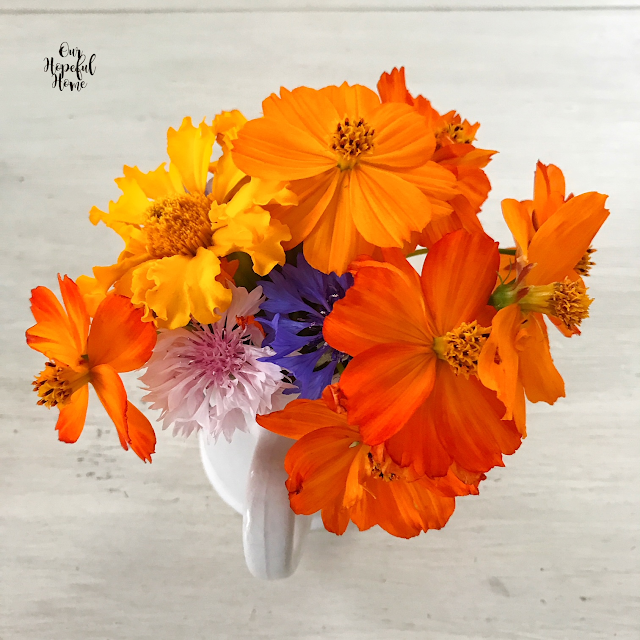


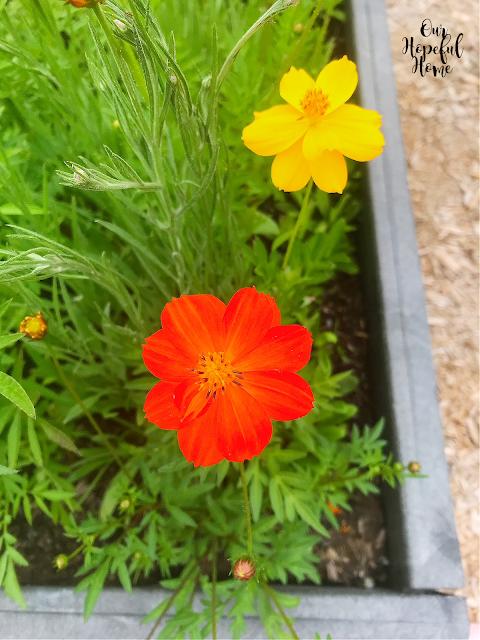
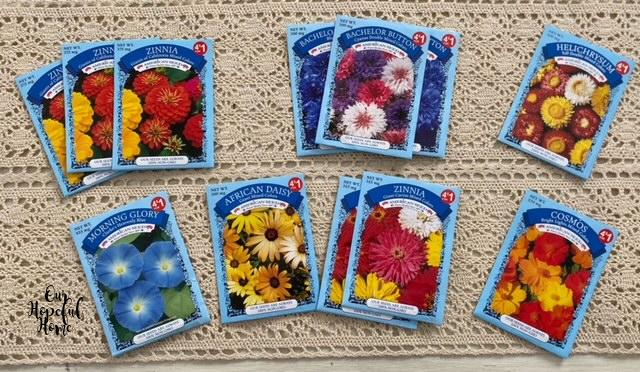
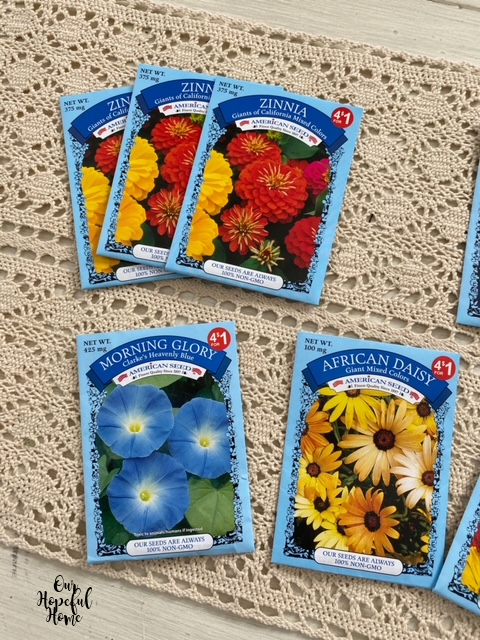









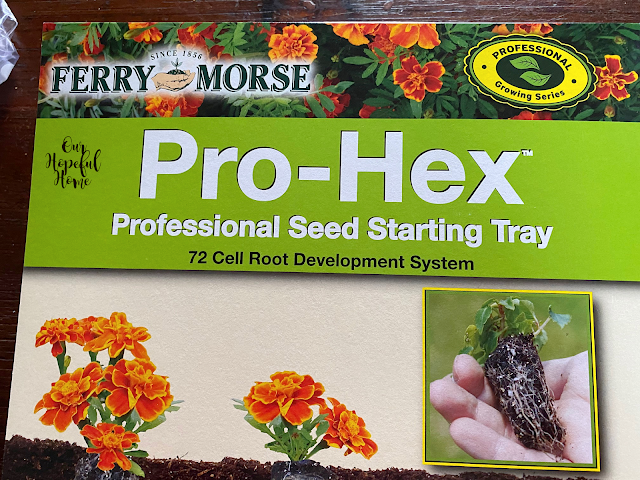














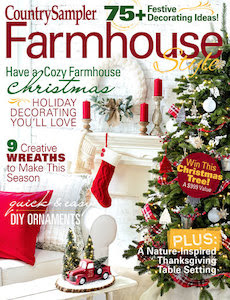



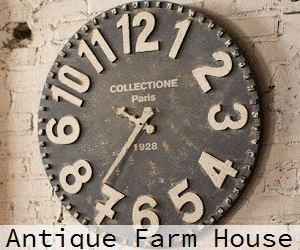
Leave a Comment!
I planted a lot of seeds this year, but I've never used a seed grid--what a great resource! Here in Texas, I sow directly into the ground and preferably when rain is in the forecast. It's been an unusually wet spring, and I currently have morning glory, marigold, snapdragon, daisy, zinnia, and petunia sprouts. I fear the deer may have gotten to my chamomile, though!
Our Chicagoland weather is so crazy this year, I've been holding back on planting flowers as the greenhouse is still too cold to move into. I did read an article that said Zinnias especially---need to be planted in the ground when the GROUND is a consistent 70 degrees.
This explains why I had such terrible failures last year with our late Spring. I haven't had the best luck with transplanting starts of those either, but I do start/plant tons of marigolds, alyssum and coleus to help save money on annuals. Nasturtiums are always fun, too. I hope to start those pots in the greenhouse next week if it warms up a bit. Any garden tips we can glean is worthwhile. Sandi
Post a Comment